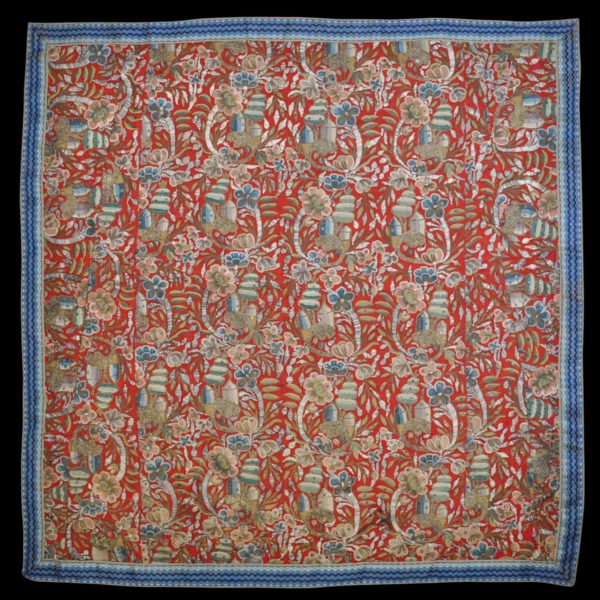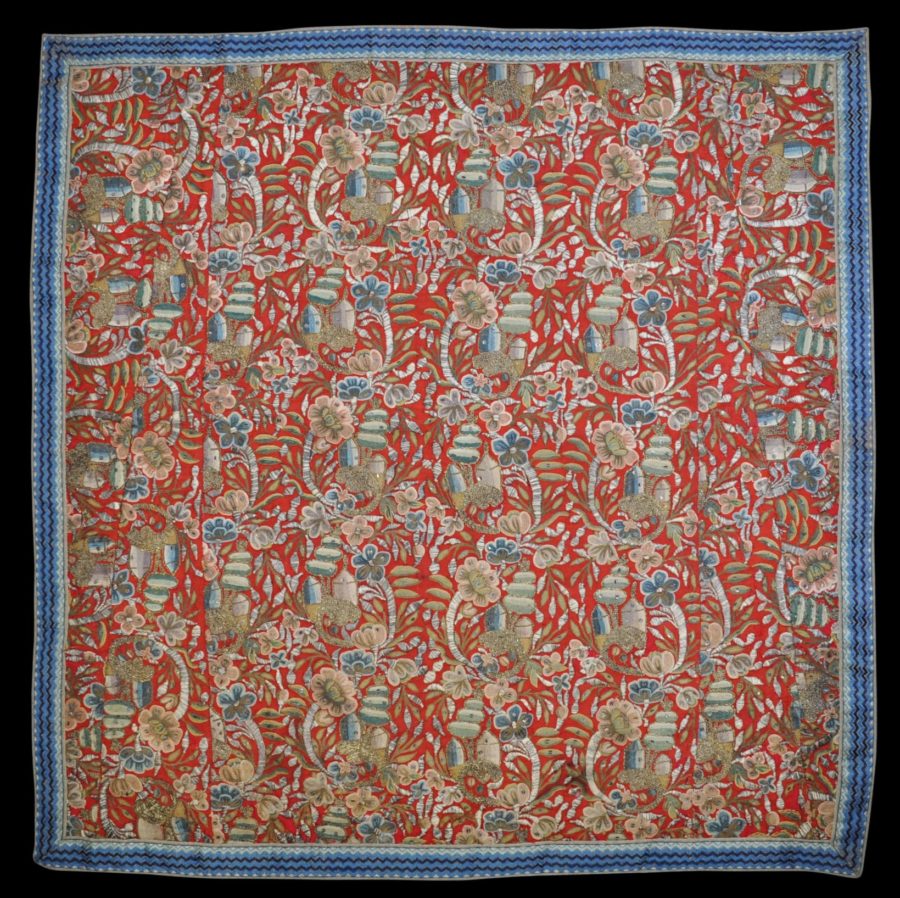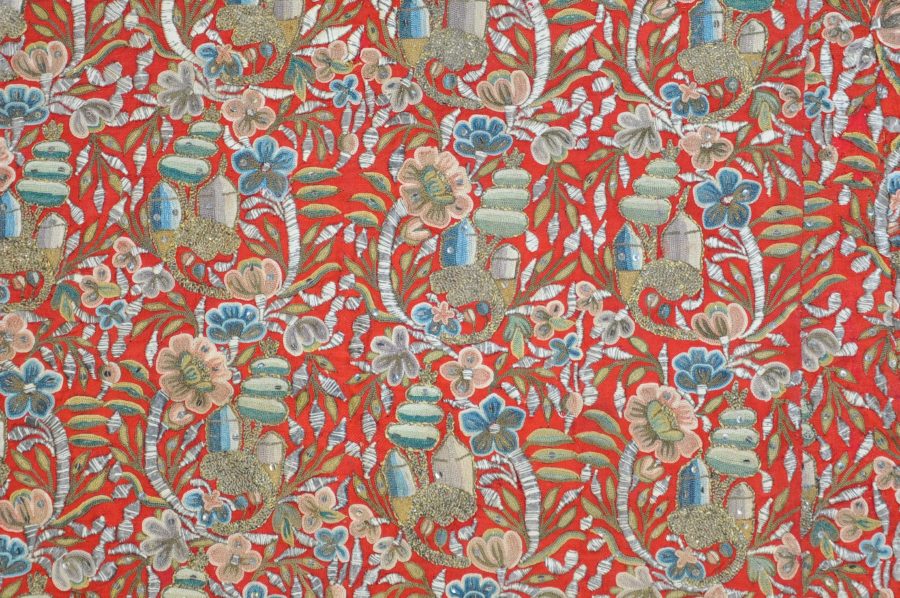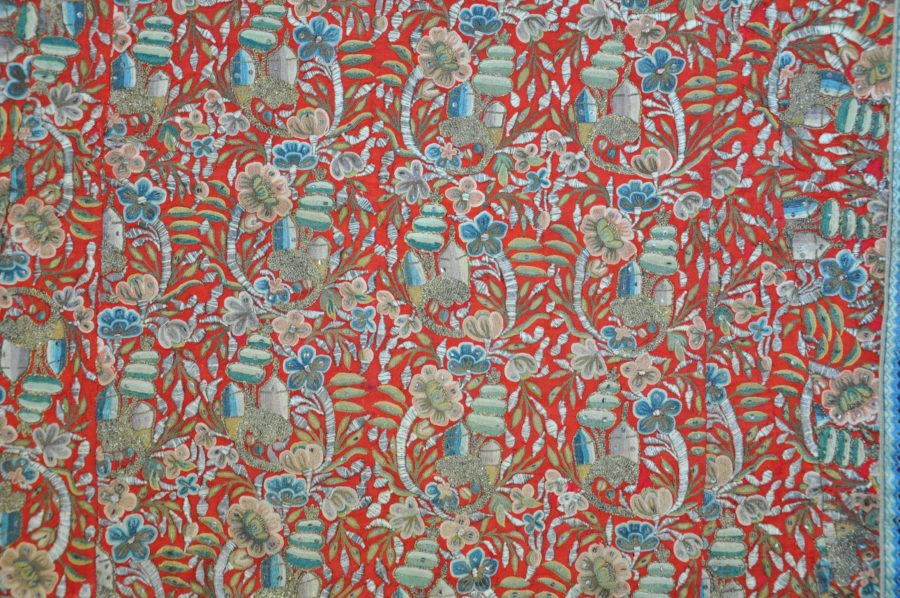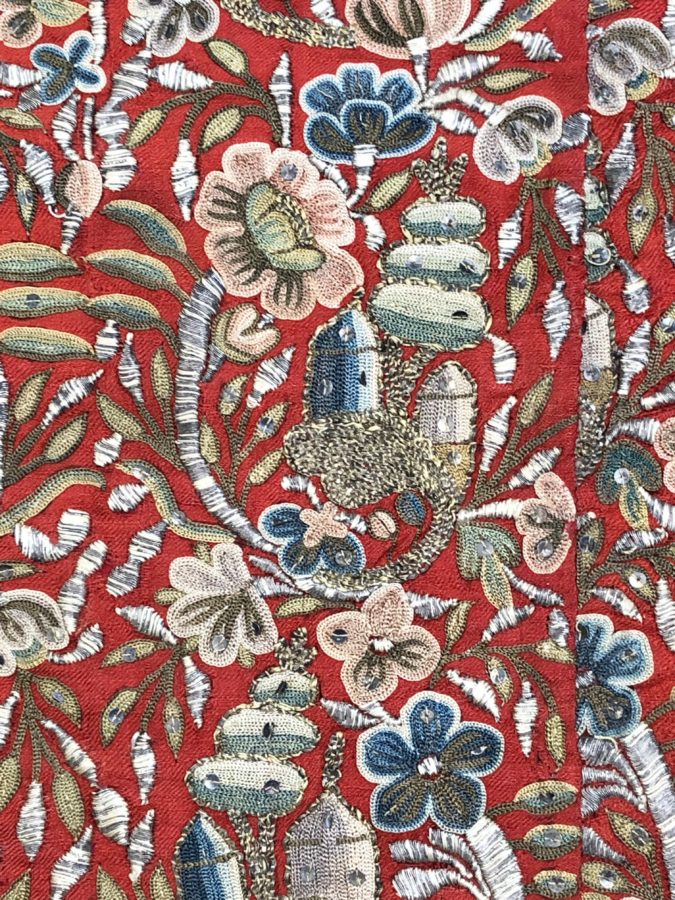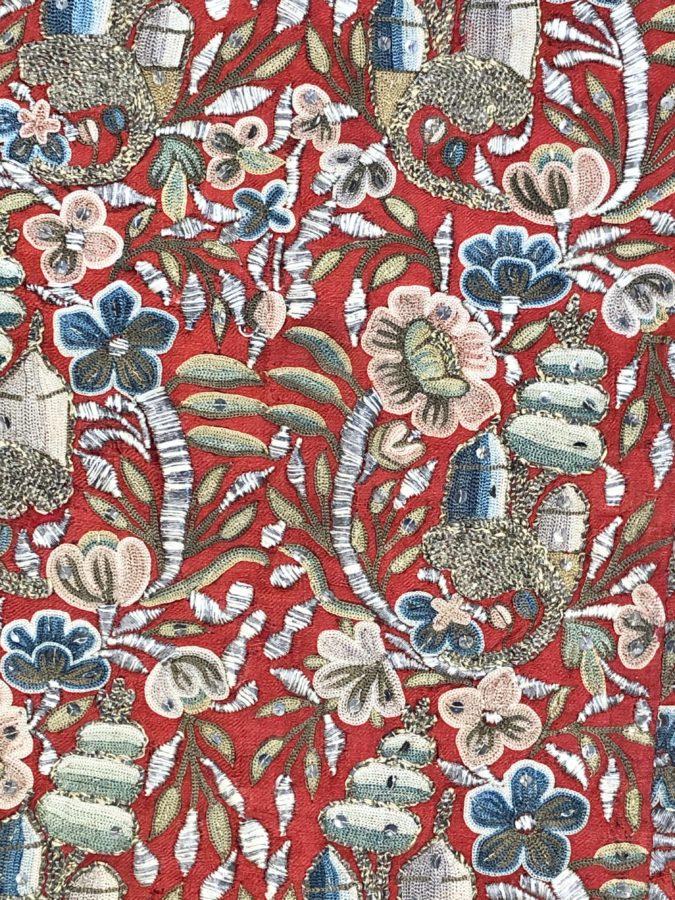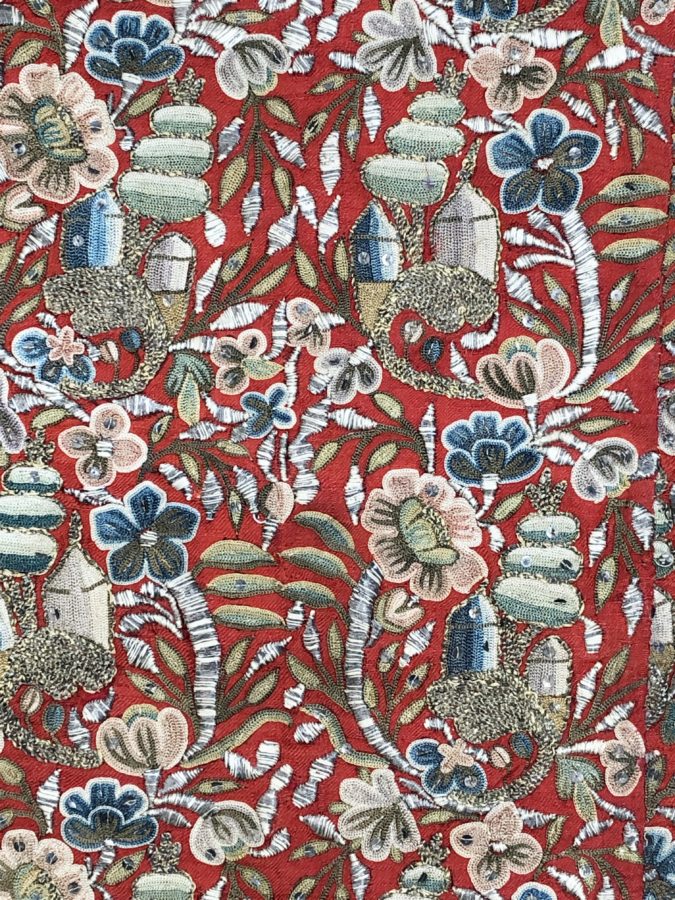This square of red silk ground textile is richly embroidered and couched with silk and metallic threads (susani) as well as small applied metal spangles. It is decorated with profuse multiple flowers, horns of plenty (cornucopia) motifs, and multiple architectural motifs. The overall square has been stitched together from a larger central panel and two smaller sections on each side. It has been bordered with a later, 19th century, blue silk edging.
The quality of the embroidery, the density and profusion of the decoration, its colour and its styling, all suggest that it is almost certainly the product of the Imperial workshops attached to the Topkapi Palace. These workshops were charged with creating luxury objects and awnings for the Ottoman sultans. Red also was a colour reserved for the Imperial household and its members.
See Rogers et al (1986, plate 106) for similar embroidery work produced in the imperial workshops of the Topkapi Palace. The illustrated piece shows similar flowers and cornucopia-type elements against a red woollen ground.
Also, see Artan (2000, p. 145) for similar embroidery work in the Topkapi Palace Museum.
Such embroidery was produced by hand using and embroidery frame. It is likely that the technique was used in Istanbul for at least two hundred years earlier but essentially no Imperial embroidery of this type has survived that is earlier than the 18th century Rogers et al (1986, p. 166). Fabric was embroidered first and then tailored and Rogers et al reports that there are lengths of cloth, embroidered with spangles and metal thread, that were never made up into garments, in the Topkapi Palace Museum today.
The square here possibly comprises fragments from a wall awning, a prayer rug, or a large tray (sini) cover. Sini covers were used to cover large metal trays on which dishes of food were served.
The assemblage of this square panel is very likely 19th century work, using 18th century fragments. Interestingly, it seems that in the 19th century, it was realised that the textile was particularly important and worth reassembling and protecting.
The square is in excellent condition. There is some minor fading but overall is still bright and the colours are distinct. There are no obvious losses, no hole and no repairs to that which is there.
References
Artan, T. et al, Palace of Gold & Light: Treasures from the Topkapi, Istanbul, Palace Arts Foundation, 2000.
Koc, A., et al, Istanbul: The City and the Sultan, Nieuwe Kerk, 2007.
Piotrovsky, M., & J.M. Rogers, Heaven on Earth: Art from Islamic Lands, Prestel, 2004.
Rogers, J.M., H. Tezcan & S. Delibas, Topkapi: Costumes, Embroideries and other Textiles, Thames & Hudson, 1986.


